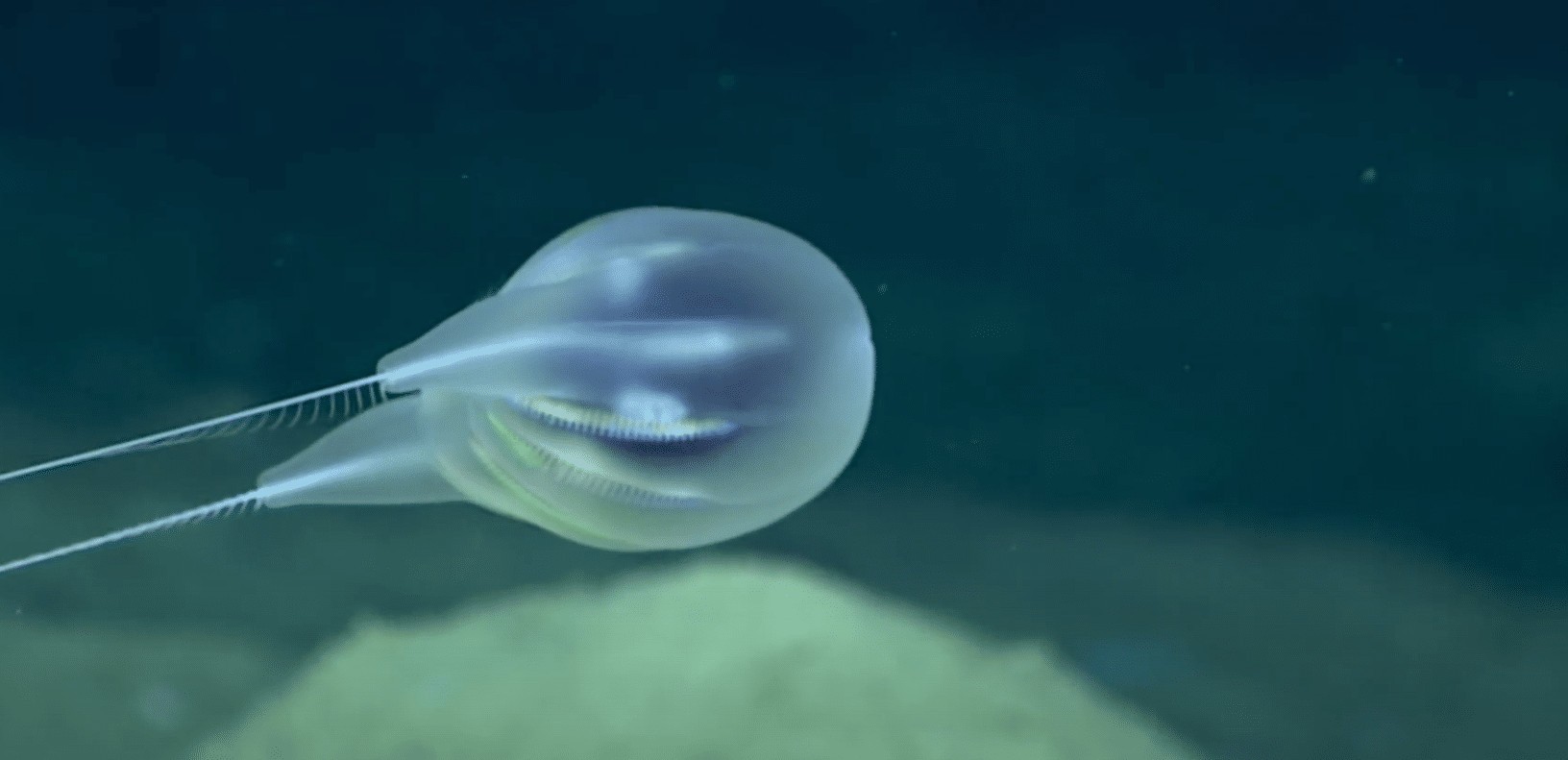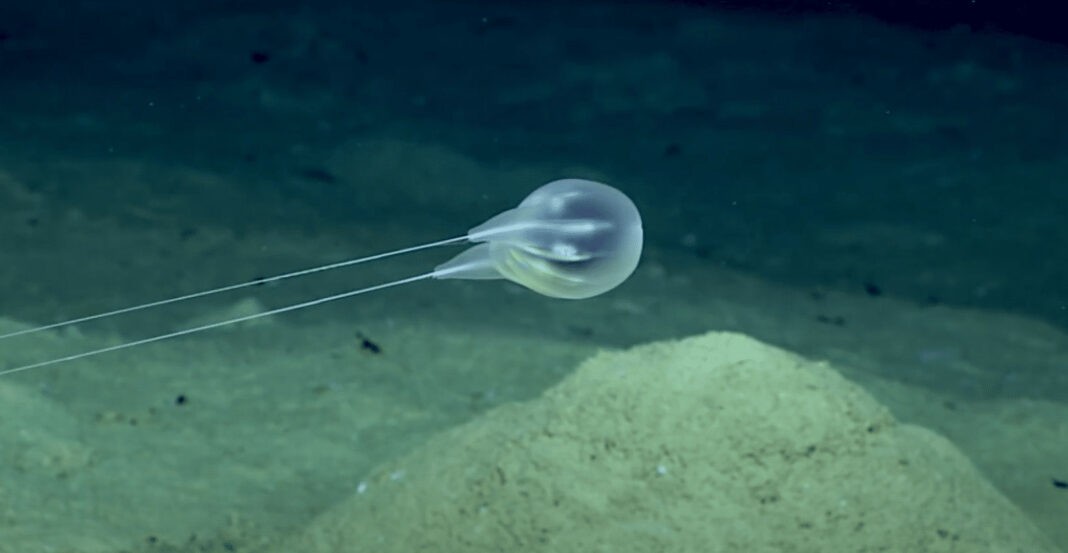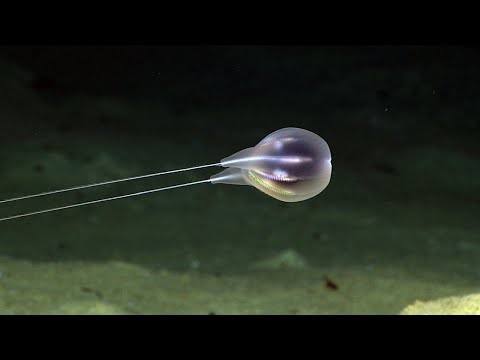Scientists have confirmed the discovery of a new species of Comb Jelly off the coast of Puerto Rico.
According to the U.S. National Oceanic and Atmospheric Administration, a NOAA research team was conducting an underwater expedition five years ago and while operating a remotely piloted underwater drone, came across a mysterious-looking blob swimming past the drone’s high-def camera lens.
The ROV captured high-definition video of the new ctenophore species — now called “Duobrachium sparksae” — during a 2015 dive off the coast of Puerto Rico. NOAA Fisheries scientists Mike Ford and Allen Collins, working from shore, spotted it and recognized it as not something anyone else had seen before.
The discovery is the first time a new species was described and annotated exclusively via high-definition video. That video had to be rigorously analyzed before a scientific paper could be published, which recently came out.
Collins said:
“It’s unique because we were able to describe a new species based entirely on high-definition video. The cameras on the Deep Discoverer robot are able to get high-resolution images and measure structures less than a millimeter. We don’t have the same microscopes as we would in a lab, but the video can give us enough information to understand the morphology in detail, such as the location of their reproductive parts and other aspects.”

Since no physical samples were collected, the videos are the only evidence of the species’ existence, he added:
“We didn’t have sample collection capabilities on the ROV at the time. Even if we had the equipment, there would have been very little time to process the animal because gelatinous animals don’t preserve very well; ctenophores are even worse than jellyfish in this regard. High-quality video and photography were crucial for describing this new species.”
While it may look like a jellyfish, comb jellies aren’t closely related, according to NOAA:
“Most comb jellies have eight rows of comb-like cilia that rhythmically beat, refracting light into colors, as they paddle through the water. Between 100–150 species of comb jellies have been identified and validated. They are all carnivores and many are highly efficient predators that eat small arthropods and many kinds of larvae.”
For more info, check out the video below or go to the NOAA website.


